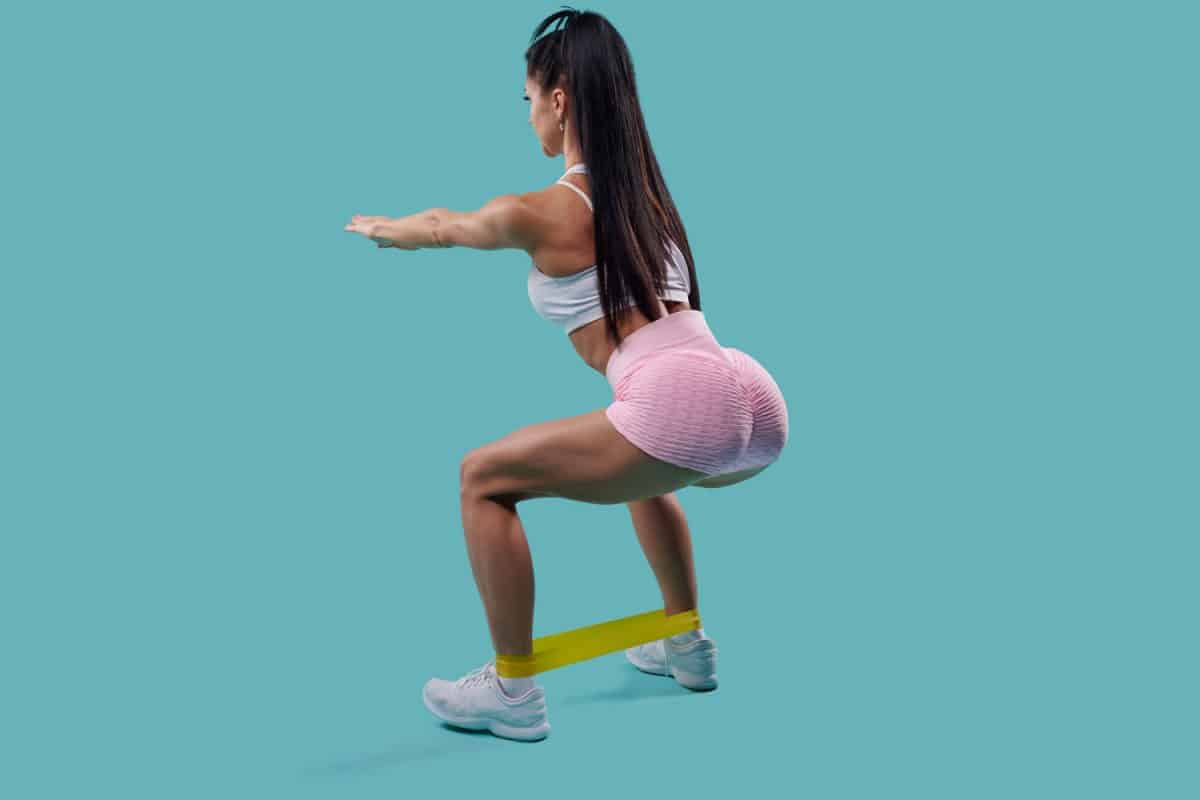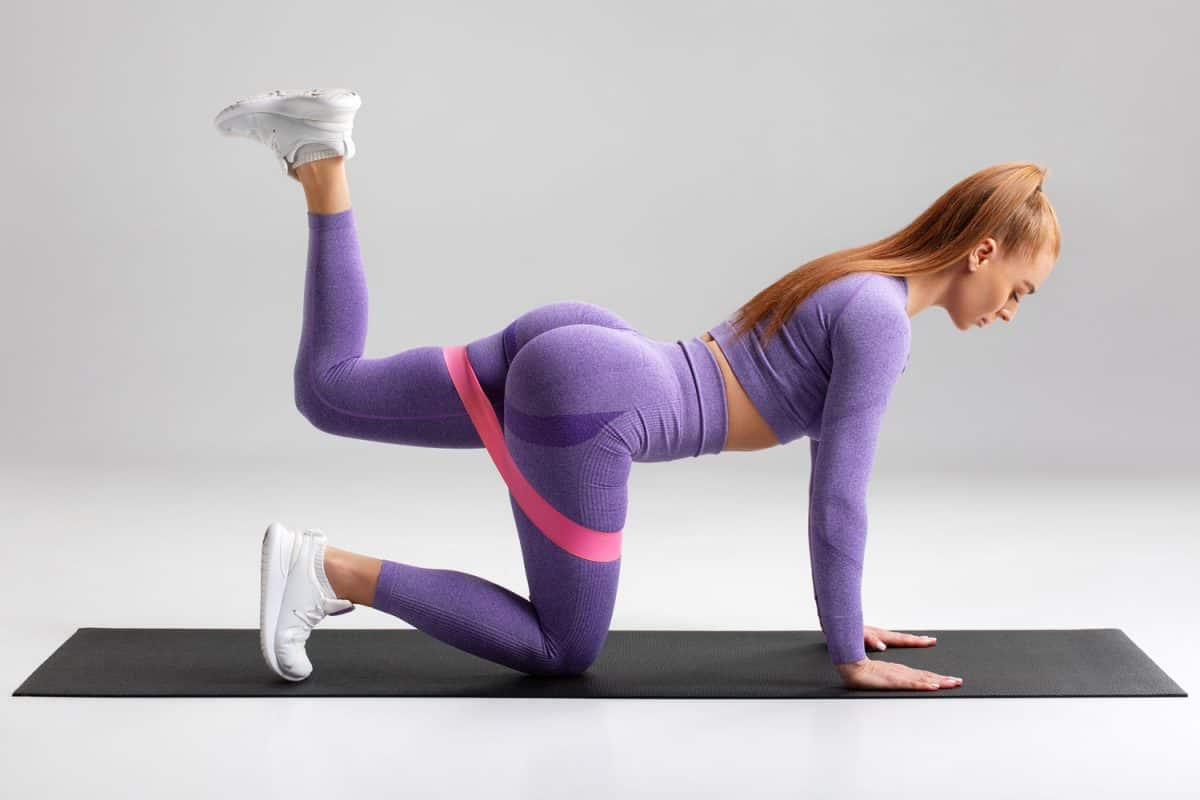You are looking to make a resistance band purchase and wonder how long the band should be. When you search online shops and stores, you will find different kinds of resistance bands of varying lengths. This post will tell you the preferred length of a resistance band and differentiate between the types of bands you will find on the market.
Here are the common types of resistance bands and the length that each should be:
- Power bands or pull-up bands (loop)- 41 inches long, 82 inches circumference
- Mini bands (loop) - 10-12 inches long, 20-24 inches circumference
- Ankle bands (loop) - 12 inches long, 24 inches circumference
- Figure 8 bands - 12 inches long
- Stackable bands - 42 inches long; handles are 12 inches for 54 inches in total length
Now that you know the approximate size for each type of resistance band, you probably have some more questions. This post will inform you how each type of resistance band can be used and why this length is best. This post will answer your other questions, including how resistance bands are measured and whether they can be shortened. We will also compare resistance bands to weights. Keep reading to learn more.

How Long Should A Resistance Band Be?
The length of the resistance band depends on the type and the intended use. Some resistance bands are loops, so the resting length is half of the total material or circumference of the band. Other resistance bands are straight and used for different kinds of exercises.
Resistance bands can generally be stretched up to 2.5 times the length without snapping. The length of the resistance band should allow you to do a complete exercise without stretching the band more than this amount. This depends on your size and what muscles you are working out with the resistance bands.
What Length Should Loop Bands Be?
Mini bands and ankle bands are best used for lower body exercises, including calves, ankles, glutes, and thighs. These loop bands should be about 12 inches with a 24-inch circumference. They can also be used for some upper body exercises, including the shoulders. Putting them around the ankles while squatting increases the tension on the glute muscles.

What Length Should Tube Resistance Bands Be?
Straight tube resistance bands should be about 3.5 feet long plus another foot for the length of the handles. This is a total of 4.5 feet or 54 inches measured from the tip of the handle to the other handle-tip. These resistance bands are stackable and can be used for full-body exercises. This includes every muscle group.
Figure 8 bands are only one foot or 12 inches in length. You can slide the figure 8 up your legs and do squats for a lower body and glute workout, or use your hands or arms for an upper-body workout.
While all resistance bands can be used for full-body workouts, it is useful to know the intended uses for each type of band. You can learn more about the different resistance band types by checking out this article. 5 Types Of Resistance Bands To Know.
Can You Shorten Resistance Bands?
Resistance bands can be shortened in two different ways to increase the relative weight resistance of your movement. They cannot be physically or permanently shortened. You can increase the resistance by wrapping part of the band around one or both of your hands. You can also shorten the band by wrapping it around one or both of your feet. This works best with flat-style bands rather than tube bands.
You can shorten tube resistance bands by creating an extra loop just below the handle. Then you will grab both loops, which effectively shortens the band to increase resistance. This is a useful method to quickly modify the difficulty of the resistance band, but some caution should be taken.
Remember every section of the resistance band can be stretched up to 2.5 times the resting length. When you shorten resistance bands in this way, the extra loop is not getting stretched. This means that the middle section of the band is getting stretched more than it would under normal circumstances.
For more information about the likelihood of your resistance band snapping, check out this article. How Far Can You Stretch A Resistance Band Before It Snaps?
What Are Mini bands Used For?
Mini bands are small loop bands that can be used for all parts of the body. They are most commonly used for lower body exercises. You can slide the mini band around your thighs and do squats with added resistance. Mini loop bands can be put around your ankles for hip and glute exercises. You can place the mini band around your thighs or just below your knees while you do lunge exercises and kickbacks to work the glutes.

Mini bands are the band of choice for working the glutes. For more information on using resistance bands to grow your glutes, check out this post. Can You Grow Your Glutes With Resistance Bands?
Fit Simplify Loop Resistance Bands
Click here to see these on Amazon.
How Are Resistance Bands Measured? [In Terms Of Weight Resistance]
The manufacturer uses a scale to measure relative resistance. The band is anchored to the scale and stretched to a certain point depending on the band type and manufacturer. A scale reading is measured and documented. The relative resistance changes throughout the exercise movement, so there is no definitive way to measure it.
Does Combining Resistance Bands Increase Weight?
Tube resistance bands can be stacked to increase the weight. This is a better alternative to shortening the band to increase your weight resistance. A stackable tube resistance band set will usually come with five or more bands of varying weight resistance. Adding all of these bands together might create a total resistance of 100 pounds or more.
There is no limit to how many resistance bands you can add as long as there is enough space to clip them to the handles. Using several bands at once also reduces the amount of tension each band receives. This will give your bands greater longevity and prevent them from snapping during your workouts. Most tube bands are snap resistant and very unlikely to snap, but the strength of the bands will be maintained for a longer period of time.
VEICK Stackable Resistance Band Set
Click here to check out this product on Amazon.
Are Bands Better Than Weights?
Resistance bands have some obvious benefits that weights do not provide. Weights only offer resistance as you are lifting. When you begin to move the weight toward the ground, the tension can reduce close to zero. Resistance bands maintain tension throughout the exercise. Increasing the time under tension while you exercise will maximize your muscle growth.
You can increase the time under tension while using weights. To do this, you will slowly allow gravity to bring the weight towards the ground. You will still feel the tension in your muscles. Before you completely release tension, you can begin to lift the weight back up with slow repetitions. Slower repetitions increase the time under tension and encourage more muscle growth.
In Closing
Small loop bands are about one foot in length and 2 feet in circumference. Larger loop bands or pull-up bands will be about 3.5 to 4 feet in length, 7 to 8 feet in circumference. Straight tube bands are stackable to increase the resistance. These bands should be about 4.5 feet in length if you measure from one handle tip to the other. You can shorten some resistance bands by wrapping them once or multiple times around your hand or foot.








